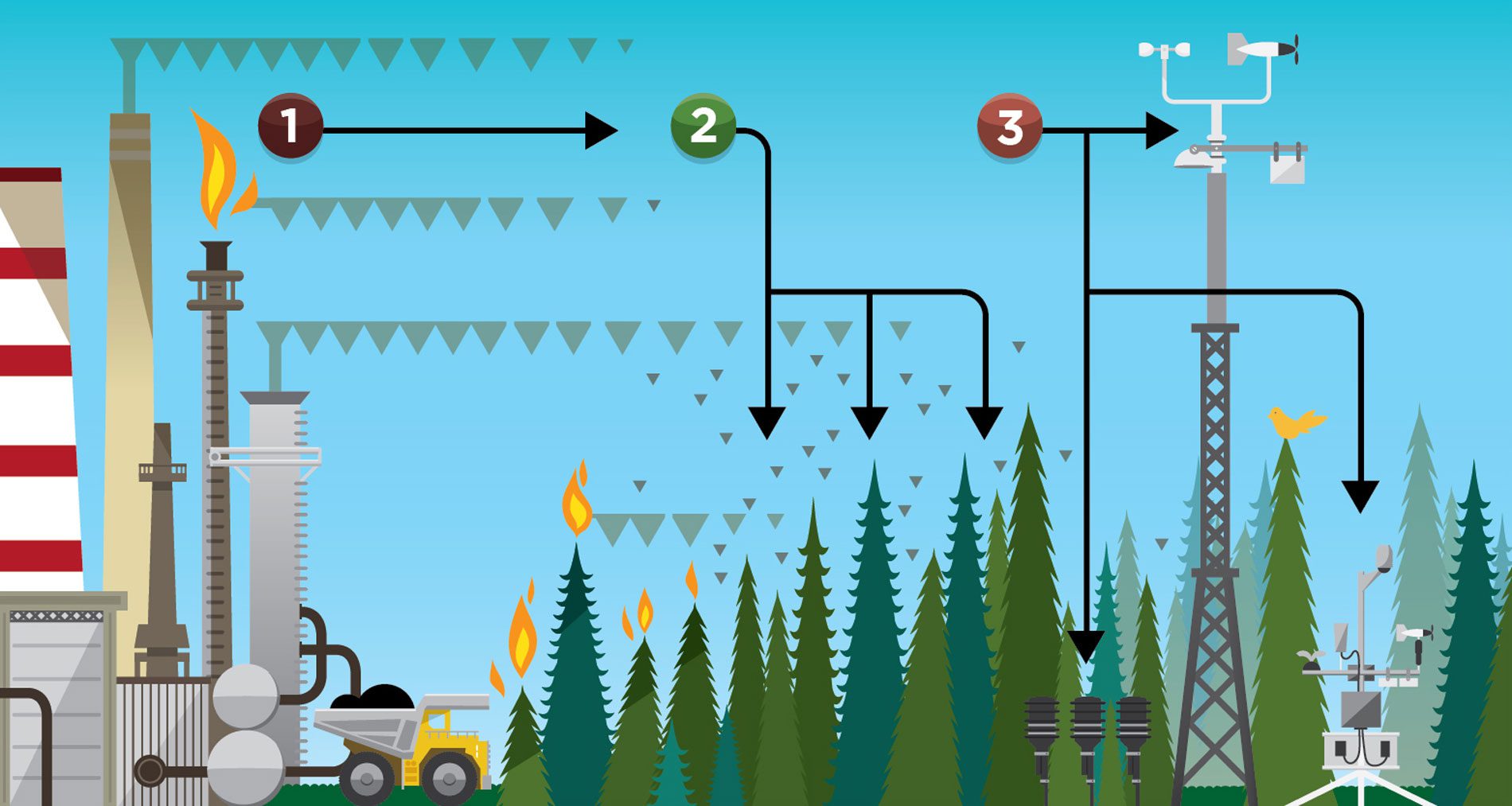Terrestrial Environmental Effects Monitoring
The Terrestrial Environmental Effects Monitoring (TEEM) Committee first gathered in 1996 to address community concerns about the impacts of oil sands-related air emissions on terrestrial ecosystems. The objective of the TEEM program is:
“To develop and operate a long-term program to detect, characterize and quantify the impact that air emissions have had or may have, in the longer term, on terrestrial and aquatic ecosystems and on traditional land resources” and was later revised to “implement an approach for establishing/determining cause-effect relationships between air pollutants and forest ecosystem health in the Oil Sands Region.”
To achieve this objective, the WBEA, through TEEM, operates an integrated Atmospheric Deposition Monitoring Program to detect possible impacts of air contaminants on forest health, which is comprised of three monitoring program components: the Deposition Monitoring program; the Forest Health Monitoring (FHM) program; and the Meteorological Monitoring program. The integrated Atmospheric Deposition Program, which is sometimes referred to as the TEEM program, is funded through the Oil Sands Monitoring (OSM) Program and aligns with the OSM Program objective to conduct comprehensive and inclusive monitoring to track impacts from oil sands development.
The WBEA monitors jack pine forest sites that are sensitive to acid deposition to assess whether there are changes to biological, physical, and chemical indicators through a sampling campaign of vegetation, soils, and lichen, every 6 years. Monitoring includes measurements of air quality and deposition (using passive and active air quality samplers and ion exchange resins), a suite of receptors (lichens and vegetation) and associated meteorological instrumentation for evaluation of a broad set of compounds (particulate matter, organic compounds, metals). In addition, data from these programs has informed source apportionment studies that characterized the specific contributions of regional and international source types to deposition within the Wood Buffalo region.
Deposition monitoring is conducted annually at regular intervals throughout the year, which contrasts the six-year cycle of intensive field sampling in the Forest Health Monitoring Program. In both cases, sampling frequency reflects the temporal variability of the environment of interest. Emissions—and subsequent deposition to the landscape—change much more rapidly and require more frequent sampling to provide accurate data.
In 2019, the WBEA completed the analysis of historical data collected by through the Atmospheric Deposition program, in combination with data collected by the Ambient Air Monitoring program, and published nine open access manuscripts in a Virtual Special Issue of the journal Science of the Total Environment. The special issue, entitled “Relationships Between Air Pollutants and Forest Ecosystem Health in the Oil Sands Region, AB, Canada” is available online. Access to the key messages from the manuscripts. View the June 18, 2019 public presentation video.



